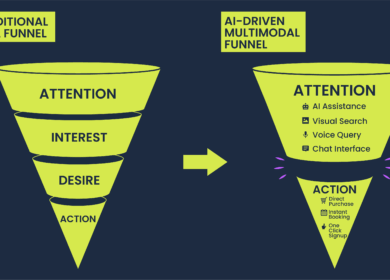By Melissa Lewelling
The Hoffman Agency, San Jose
Audiences have been intrigued, and terrified, by the potential of robots and artificial intelligence (AI) for decades – a sentiment often reflected by Hollywood; most recently in movies such as I, Robot, Transcendence, RoboCop and Avengers: Age of Ultron.
In each of these movies, the story begins with a well-meaning scientist or developer trying to progress humanity and its capabilities through machine learning. However, in the creation process they struggle to add programmed emotion, morality or “soul” to their creations. As the scientists and developers attempt to do so, through varying methods, these well-meaning Dr. Frankenstein-types eventually create a monster (or more specifically, an AI that sees the world’s only salvation as the eradication of humans).
It’s at this point that a band of warriors for humanity usually rise against the machine, and destroy it. This one action somehow seems to return the world to a completely pre-AI existence (plus a few more broken buildings) accompanied by a new sense of cynicism toward any sort of technological advancement.
Ironically, it has been in the past five years, among this cultural conversation and growing “doomsday syndrome,” that actual developments in AI and robotics have begun to come to market.
Whether it’s in the form of assistance AI software like Siri, healthcare solutions like surgical robots, hospitality and retail aids like the OSH Bot and Savioke’s butler robot for hotels or the advanced connectivity that will enable the commercialization of driverless cars and more (IoT) – robotics and AI are quietly entering every industry and leaving an indelible mark.
Unfortunately, for some, this is a terrifying thought.
So how do companies developing robotics and AI keep their corporate communications positive in the midst of an increasingly pessimistic view of their industry?
A great example is IBM’s Watson Group.

Watson is a cognitive thinking machine developed by IBM in 2006, after its artificial intelligence program, Deep Blue, beat the reigning world chess champion, Garry Kasparov, in 1997. Although Watson was initially developed to compete as a contestant on Jeopardy in 2011, just five years later IBM has managed to turn its simple question-answering AI program into a supercomputer geared to impact various industries – beginning with healthcare, finance and hospitality.
By doing a quick Google search of Watson’s latest news coverage – which is by no means a scientific study, simply a Litmus test to gauge the tone of the Group’s latest coverage – it’s clear that not only is Watson an incredible technological accomplishment, but it’s also being portrayed by media in a mainly positive or neutral light. From a communications perspective, another incredible accomplishment.

As PR professionals, crisis communications is often part of the job, and is an important skill to develop regardless of your specific industry. By the same token, learning how to proactively generate non-negative news coverage for a potentially controversial product (especially if it exists in a hostile environment) is just as vital.
Through well-developed marketing and PR efforts, IBM’s Watson Group has managed to keep public sentiment of its AI creation separate from the “doomsday syndrome” perpetuated by so many Hollywood films – and offers two key insights for PR professionals in all industries on how they can do the same:
- Choose the Right Spokesperson
A news article is only as good as a reporter’s source. So if you want to raise your chances of securing positive or neutral coverage, provide a reporter with the best spokesperson available. For much of their coverage, IBM Watson offers up the Group’s CTO Rob High – who articulately addresses a wide spectrum of related topics and seems to put the public at ease about his company’s ever-growing supercomputer.

So what are some key attributes to look for in a spokesperson scheduled to speak to a pessimistic or untrusting audience?
Someone in a high position within the organization, who is also personable and comfortable speaking about the topic in detail or from a higher industry level. It’s often said that the more technical something is written, the less the author understood it – and in my experience, that’s typically the case. So make sure you choose a spokesperson with enough understanding of, and experience in, your industry that they can translate and extrapolate a larger meaning from even the most technical details of your company’s story.
- Encourage Your Company to Stand for More
Admittedly this point is geared more toward in-house marketers, but it can also apply to an agency PR team tasked with developing a new campaign (as this can open up more doors of influence and executive support).
Increasingly researchers are finding that the public now expects all companies to stand for something more than just the product or service they’re selling. Essentially, consumers are expecting the companies they choose to support to in turn choose to support a cause bigger than themselves. And why shouldn’t they?
I’m not encouraging a falsely motivated, half-hearted support of a cause just to win over your audience – that’s wrong and unethical. However, what I am proposing is an examination of your company’s already existing values. From there, think outside of the box to map those human and/or industry values to an area where your company could give back to the community on a larger scale than an individual could.
The “giving back” doesn’t necessarily have to align with a non-profit cause – it could involve innovating in a specific area of industry need that impacts people’s welfare on a larger scale than this quarter’s profits. For example, when IBM’s Watson Group began turning its AI into a supercomputer, they started by identifying a need – technological innovation for healthcare procedures – and developed their creation accordingly.
What can your company do to make the world a better place? Find out, act on it and strong news coverage will likely follow. Be the story you’re hoping to see.

